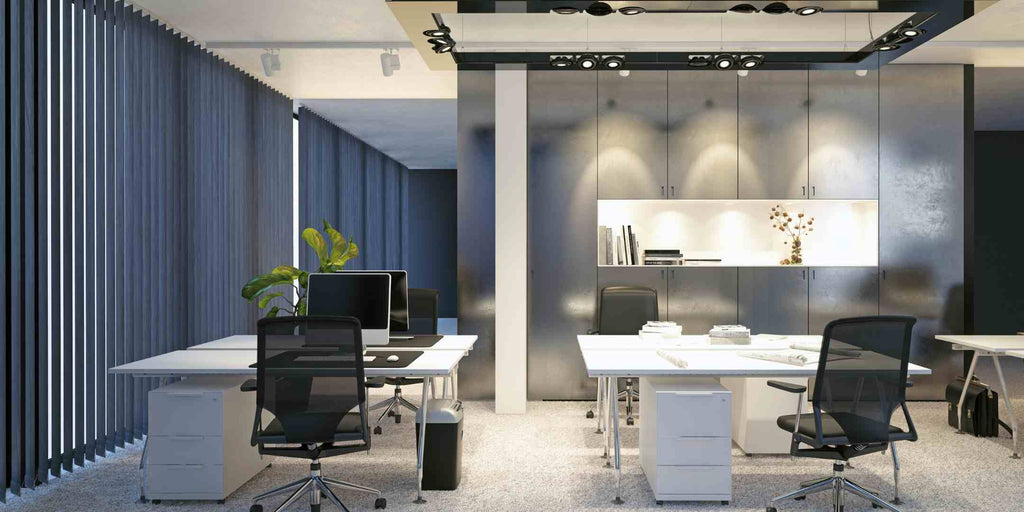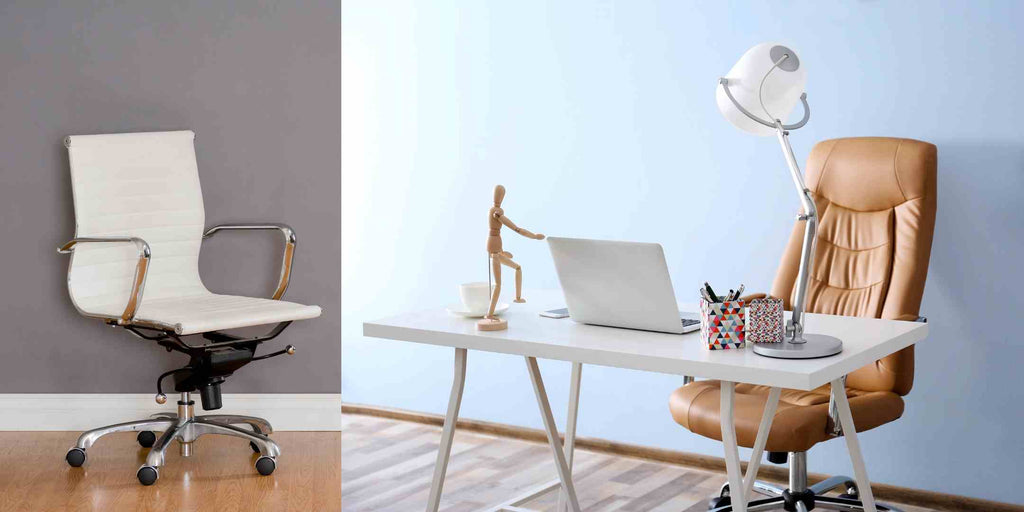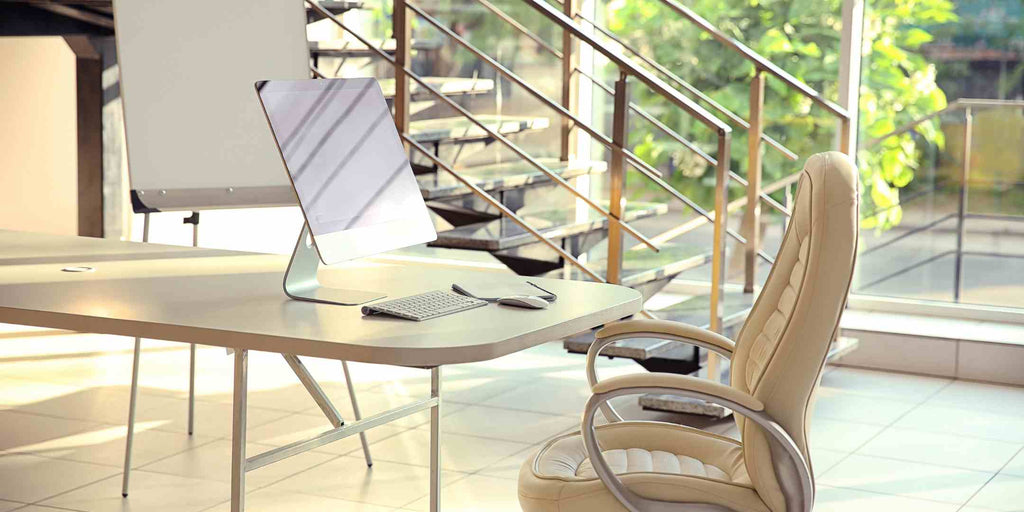Creating an efficient and comfortable work environment ensures maximum productivity and employee satisfaction in today's fast-paced world.
Office interior design plays a significant role in enhancing the overall work experience and positively impacting the performance of the employees because a well-designed workspace not only makes the environment aesthetically pleasing but also boosts employee morale and creativity, leading to better business outcomes.
Additionally, the design of the office can have a significant impact on employee motivation, engagement, and productivity. It is, therefore, essential to carefully consider the design elements that can create a conducive work environment.
So, let's dive into the world of office interior design and discover how you can revamp your workspace for maximum productivity.
The Importance of Designing for Productivity

Designing for productivity means optimising a workspace to help employees be as efficient and effective as possible. This is important for several reasons.
- Productivity is a key factor in business success. The more productive employees are, the more work they can accomplish in a shorter time, leading to increased revenue and profitability.
- A productive workspace can help employees feel more fulfilled and satisfied. When employees can accomplish tasks efficiently and effectively, they are more likely to feel a sense of accomplishment and pride in their work, boosting morale and job satisfaction.
- A productive workspace can help reduce stress and burnout. When employees feel like they are constantly struggling to keep up with their workload, they can become overwhelmed and stressed, leading to burnout and illness. Employers can help reduce stress and create a more positive work environment by designing a workspace that supports productivity.
Assessing Your Current Workspace

Assessing your current workspace is essential in revamping your office for optimal productivity. This involves critically examining your current office layout, design, and functionality to identify areas that need improvement.
Here are some factors to consider when assessing your current workspace:
Workflow
Consider the flow of work through your office space. Are employees able to move quickly between different areas? Is there a clear path for moving tasks from one person to another? Identifying bottlenecks and inefficiencies in your workflow can help you make changes to increase productivity.
Space Utilisation
Are you making the most of your available space? Are there areas of the office that are underutilised or overutilised? Consider how your space is used and whether changes could be made to serve your needs better.
Employee Needs
Talk to your employees about their needs and how the current workspace is meeting (or not meeting) those needs. Are there ergonomic issues that need to be addressed? Are there privacy concerns that need to be taken into account? Understanding employee needs can help you create a workspace tailored to their needs and supports their productivity.
Technology
Consider the technology that is being used in your workspace. Is it up-to-date and functional? Are there areas where technology could be improved to support productivity? Making sure that your technology is optimised for productivity can have a significant impact on your overall efficiency.
Design and Aesthetics
Consider the overall design and aesthetics of your workspace. Is it visually appealing and conducive to productivity? Are there elements that are distracting or detracting from productivity? Making changes to the design and aesthetics of your workspace can greatly impact the overall productivity and morale of your employees.
Choosing the Right Office Furniture and Equipment

Choosing the right office furniture and equipment is important in designing a workspace that supports productivity. Here are some factors to consider when selecting office furniture and equipment:
Comfort
Comfortable office furniture and equipment can help reduce employee discomfort and increase productivity, so consider choosing office chairs that provide good back support, adjustable desks to accommodate different employee heights and ergonomic keyboards and mice to reduce strain on the wrists.
Functionality
Consider the functionality of the furniture and equipment you choose. Does it serve the needs of your employees? Are there features that will help them work more efficiently and effectively? For example, investing in a multifunctional printer/scanner can help employees quickly complete their tasks without leaving workstations.
Quality
Choosing high-quality office furniture and equipment ensures that it lasts long and doesn't break down frequently. Cheap furniture and equipment may seem like a good deal in the short term, but repairs and replacements can cost you more over time.
Aesthetics
The appearance of your office furniture and equipment can also impact productivity. Choose furniture and equipment that matches the aesthetic of your workspace and provides a visually appealing environment for your employees to work in.
Budget
Finally, consider your budget when choosing office furniture and equipment. While high-quality furniture and equipment may be more expensive upfront, they may save you money in the long run by reducing repair and replacement costs. Consider investing in the most important furniture and equipment first, then add additional items as your budget allows.
Lighting and Colour: How They Affect Productivity

Lighting and colour can have a significant impact on productivity in the workplace. Here's how:
Lighting
Adequate lighting is essential for a productive workspace. Poor lighting can lead to eyestrain, headaches, and fatigue, reducing productivity. On the other hand, good lighting can help employees stay alert, focused, and energised throughout the day, and natural light is ideal, but if that's not an option, choose lighting that is bright enough to light the space without causing glare or shadows.
Colour
Colours can psychologically impact our mood and energy levels, so it's important to choose colours that support productivity in the workplace. For example, blue is known to have a calming effect, while green can help reduce eye fatigue. Yellow and orange are energising colours that can help boost creativity and motivation. Still, using colour in moderation is important, as too much of one colour can be overwhelming or distracting.
Contrast
Contrast is also important when it comes to productivity. Choosing colours with high contrast can help increase visual interest and focus. For example, black and white are high-contrast colours that can help make text
Designing for Employee Comfort and Wellness

Ergonomics
Ergonomics studies designing equipment and systems to fit the human body. Incorporating ergonomic design principles into your workplace can reduce employee discomfort and injury and increase productivity. For example, adjustable chairs and desks, wrist supports, and footrests can all help employees maintain proper posture and reduce strain on their bodies.
Natural elements
Incorporating natural elements like plants and natural light can help reduce stress and improve employee wellness. Plants can help purify the air and add visual interest to the workspace, while natural light can help regulate employee sleep patterns and reduce eye strain.
Break areas
Providing designated break areas can help employees relax and recharge during the workday, so consider creating a comfortable lounge area or outdoor space where employees can take breaks, eat lunch, or socialise.
Conclusion
Revamping your workspace is a great way to improve productivity, creativity, and overall job satisfaction. By assessing your current workspace, choosing the right furniture and equipment, and designing for employee comfort and wellness, you can create a workspace that supports your employees' needs and goals.
By prioritising employee needs and designing a workspace that supports their well-being and productivity, you can create a positive work environment that ultimately benefits both employees and the organisation.







